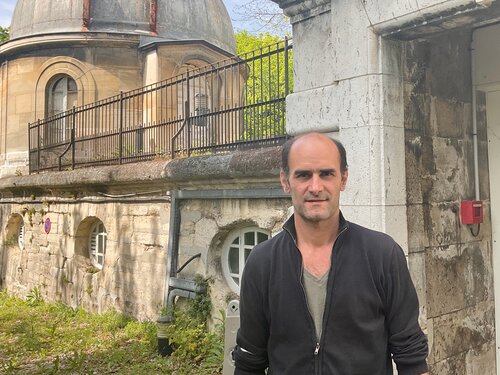
Sébastien Bize first distinguished himself by his important contribution to the construction of the "double fountain", a laser-cooled atomic clock that is unique in the world because it works simultaneously with cesium 133 and rubidium 87 atoms. Indeed, this clock exploits the hyperfine transition of cesium which defines the duration of the time unit of the International System of Units, the second, but also the corresponding transition of rubidium, which has advantageous physical properties at very low temperature. This exceptional clock, in operation almost continuously for nearly 20 years now, has allowed SYRTE to have the most accurate primary frequency standard in the world, and to have the 6.8 GHz hyperfine transition of rubidium 87 recognized as the first secondary representation of the time unit. Sébastien Bize has also worked to increase the impact of the laboratory and of France in world time metrology, and has greatly contributed to the fact that the double fountain, together with the cesium atomic fountains already developed and operated at the laboratory, have contributed to more than 40% of the International Atomic Time calibrations over the last 15 years.
Such a precision of time measurement kept for several years, allows to search for tiny variations of space-time and thus to test the theory of gravitation and the standard model of particle physics, competing with and often exceeding the cosmological and high energy tests. The double fountain has thus served, by comparing the frequencies of atomic transitions of rubidium and cesium, to put limits on potential temporal variations of the fine structure constant and to contribute to the search for dark matter. By comparing the frequencies of the double fountain with those of hydrogen masers, Sébastien Bize and French and Australian colleagues have been able to perform one of the most stringent tests of local Lorentz invariance.
These are only a few facets of Sébastien Bize’s work. A visionary and pioneer, Sébastien has been involved since 2002 in the development of new generation clocks, no longer using transitions "allowed" by quantum physics, but "forbidden" transitions, where the transition frequencies are no longer in the 10 GHz range but in the 400-800 THz range, and which are then excited by lasers. The much higher frequency of the transition makes it possible to slice and thus measure time with an increased precision of several orders of magnitude. To limit the perturbation of the transition frequency by the Doppler effect and by the effect of interactions between atoms (among others), optical clocks require the control of the movement and position of atoms in ultra-sophisticated traps. New quantum systems, with atoms or ions, are then studied to realize these "optical" clocks.
Sébastien Bize has undertaken the first optical cold atom mercury clock, showing that one of its transitions has particularly attractive quantum properties for invariance tests of fundamental constants. The cold mercury atom clock is a challenge made particularly audacious by the necessary mastery of ultraviolet optics and nonlinear optics, in addition to the mastery of quantum technologies.
Today, a whole set of clocks probing transitions of different atoms (mercury, strontium, caesium and rubidium) are operated together at SYRTE and compared by optical frequency combs. Sébastien Bize was thus able to play a central role in the precise determination of the frequency relationships between these new atomic transitions, and in the recognition of new secondary representations of the second, some of which will play a role in the future redefinition of the second.
The years to come will be very exciting. Optical clocks, instruments of extreme precision, which can be compared without degradation by new optical means on the ground and in space, promise, beyond the redefinition of the second, the advent of chronometric geodesy and ever more stringent tests of elementary interaction theories.
The European Frequency and Time Forum, EFTF (see https://www.eftf.org) gathers the European community of researchers, metrologists and industrialists specialized in the precise measurement of time and frequency. Its activities include the organization of the conference series of the same name since 1987, and the attribution of prizes since 1993.
